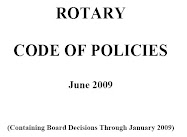
Photo: ShelterBox
PORT-AU-PRINCE (February 11, 2010) - One month after the catastrophic quake that leveled most of Port-au-Prince, CARE and other aid agencies are in a race against time to get people waterproof shelter and decent sanitation before the rainy season hits at the end of March. Most people crammed into overcrowded temporary camps are huddled under bed sheets strung between poles or sticks – hardly enough to block out the sun, but useless against the torrential downpours of Haiti's rainy season.
"The coming month will be all about the rain. We need to get these people waterproof shelter. Acute respiratory infection is rising, because they are sleeping on the bare ground, and they get damp at dawn from the dew," said Lizzie Babister, senior shelter advisor for CARE in Haiti. "Drainage will be the next issue, partly because of excrement near the sites, and partly because they'll have rivers running through their shelters. It's going to be a real push to get this done in time for the rainy season at the end of March."
While tents might seem to be the logical solution, there simply isn't enough room in downtown Port-au-Prince's limited public spaces. The shelters that have sprung up after the quake are sandwiched in one next to the other, often using the same poles as supports.
"A typical family tent has a floor space of 16 square meters, which is four times as much space as people are currently squatting on in the urban areas," said Babister. "If we start distributing those in downtown Port-au-Prince, we're going to displace three-quarters of the population. The immediate solution for the congested areas isn't tents, it's tarps. Lots of them, and fast."
In the less-crowded rural areas, family tents are a temporary solution, as people have more access to open space. But shipping in enough family tents for all the people in need would take months – too late to beat the rainy season. By contrast, shipments of sturdy, reusable 6 meters x 4 meters tarps (plastic sheeting) can arrive in Haiti in days or weeks. This will keep people dry while aid agencies start implementing a longer-term solution to the shelter crisis.
Sanitation is the other half of the ongoing crisis in post-quake Haiti. While organizations like CARE are building latrines in the camps, we are doing "sanitation triage" in camps built on hills or areas without access to latrines, said Paul Shanahan, CARE's senior water and sanitation advisor.
"We're still fighting the latrine battle in the sanitation war, but we've also started the second line of defense, which is going into the camps and removing the excrement that is piling up. It's not pretty, but it needs to be done," said Shanahan. "Our biggest fear at this point is the outbreak of disease. It's one thing to see half your family die in an earthquake, but it's another to watch the other half die slowly from diarrhea. It's more than any flesh and blood can bear."
In addition to building 3,000 latrines, CARE is also providing hand-washing education, hygiene kits with soap and cleaning supplies and removal of excrement from the camps. For housing, CARE plans to provide emergency shelter for 8,500 families (42,500 people).
Despite the challenges, great progress has been made by the Haitian people and humanitarian community to assist the nearly three million people affected by the earthquake. To date, CARE has reached more than 184,737 people with food, safe drinking water, shelter, water and sanitation facilities, emergency supplies and reproductive health care for pregnant and nursing mothers. But more needs to be done.
The next looming hurdle is the hurricane season, which starts as early as June. Port-au-Prince is surrounded by mountains and therefore largely protected from hurricanes, but flooding is a huge risk as rain comes streaming down the mountains, bringing rivers of mud along with it.
"We have rubble from the buildings that we can use as flood defenses, but we need to start planning for this now," said Babister. "Everything is a race against time."







No comments:
Post a Comment